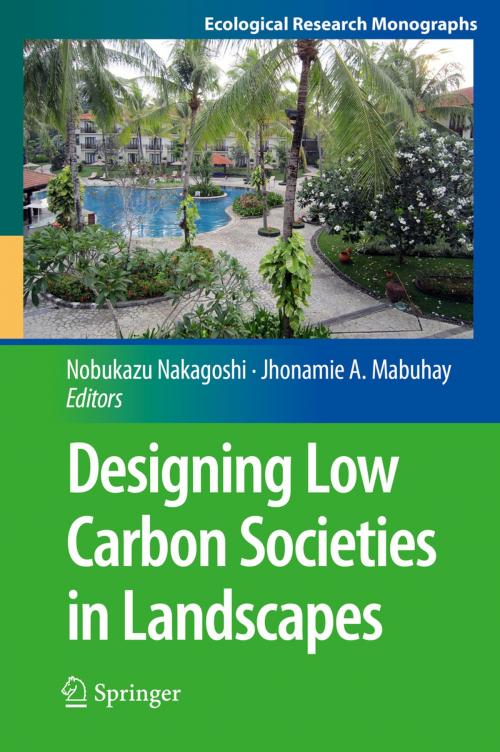Designing Low Carbon Societies in Landscapes
Nonfiction, Science & Nature, Science, Biological Sciences, Ecology, Environmental Science| Author: | ISBN: | 9784431548195 | |
| Publisher: | Springer Japan | Publication: | May 9, 2014 |
| Imprint: | Springer | Language: | English |
| Author: | |
| ISBN: | 9784431548195 |
| Publisher: | Springer Japan |
| Publication: | May 9, 2014 |
| Imprint: | Springer |
| Language: | English |
This book focuses on three major means of achieving a low carbon society: conservation of the ecosystem complex, changes of arrangement of landscapes, and creation of biodiversity. There are specific countermeasures to be taken for carbon absorption in the three types of landscapes—urban, cultural, and natural—because their carbon balances differ. Urban landscapes are promising sites because they have the potential for greening and the creation of biodiversity. Cultural landscapes in the tropics had not been actively researched until recently, but this book now presents a collection of several cases focused on those areas. Natural landscapes had existed in abundance in developing countries; later, nature protection areas were designated to coexist with development. Now, however, developmental pressure has penetrated into those nature protection areas, and landscape ecological projects are urgently required to preserve them.
As a result of global warming, abnormal weather phenomena including super typhoons have occurred frequently in recent years. The major underlying cause is the higher concentration of greenhouse gases released by human activities. As well, major natural absorbers of CO2 such as forests, wetlands, and coral reefs are shrinking, and the human impact is causing the ecological balance to deteriorate. Controlling CO2 emissions and expanding the CO2 absorbers are keys to reducing total CO2. Low carbon societies can be established by maintaining the original CO2 balance through integration of multiple tools, with contributions from diverse fields such as physics and chemistry, physiology and humanities, and education. On the basis of an international consensus, the environment must be protected no matter what sacrifices are required. As this book demonstrates, achieving a low carbon society is a top priority, and landscape conservation is the first step in ecological research toward that goal.
This book focuses on three major means of achieving a low carbon society: conservation of the ecosystem complex, changes of arrangement of landscapes, and creation of biodiversity. There are specific countermeasures to be taken for carbon absorption in the three types of landscapes—urban, cultural, and natural—because their carbon balances differ. Urban landscapes are promising sites because they have the potential for greening and the creation of biodiversity. Cultural landscapes in the tropics had not been actively researched until recently, but this book now presents a collection of several cases focused on those areas. Natural landscapes had existed in abundance in developing countries; later, nature protection areas were designated to coexist with development. Now, however, developmental pressure has penetrated into those nature protection areas, and landscape ecological projects are urgently required to preserve them.
As a result of global warming, abnormal weather phenomena including super typhoons have occurred frequently in recent years. The major underlying cause is the higher concentration of greenhouse gases released by human activities. As well, major natural absorbers of CO2 such as forests, wetlands, and coral reefs are shrinking, and the human impact is causing the ecological balance to deteriorate. Controlling CO2 emissions and expanding the CO2 absorbers are keys to reducing total CO2. Low carbon societies can be established by maintaining the original CO2 balance through integration of multiple tools, with contributions from diverse fields such as physics and chemistry, physiology and humanities, and education. On the basis of an international consensus, the environment must be protected no matter what sacrifices are required. As this book demonstrates, achieving a low carbon society is a top priority, and landscape conservation is the first step in ecological research toward that goal.















